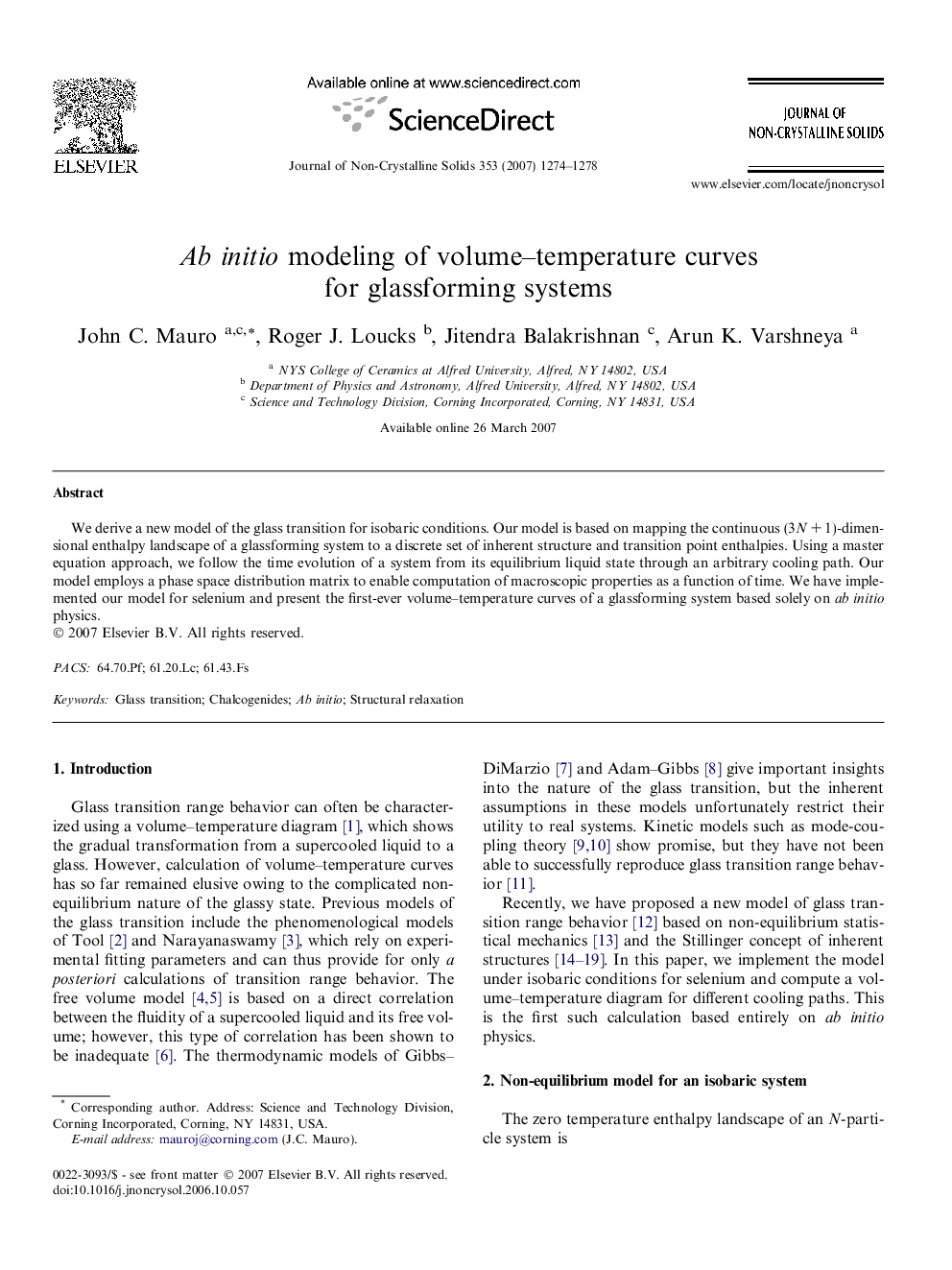| Article ID | Journal | Published Year | Pages | File Type |
|---|---|---|---|---|
| 1485641 | Journal of Non-Crystalline Solids | 2007 | 5 Pages |
Abstract
We derive a new model of the glass transition for isobaric conditions. Our model is based on mapping the continuous (3N + 1)-dimensional enthalpy landscape of a glassforming system to a discrete set of inherent structure and transition point enthalpies. Using a master equation approach, we follow the time evolution of a system from its equilibrium liquid state through an arbitrary cooling path. Our model employs a phase space distribution matrix to enable computation of macroscopic properties as a function of time. We have implemented our model for selenium and present the first-ever volume–temperature curves of a glassforming system based solely on ab initio physics.
Related Topics
Physical Sciences and Engineering
Materials Science
Ceramics and Composites
Authors
John C. Mauro, Roger J. Loucks, Jitendra Balakrishnan, Arun K. Varshneya,
